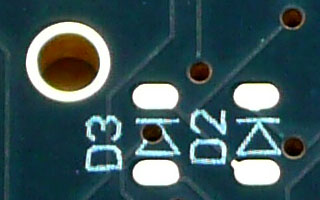Advanced PCB design to cope with the problems of lead-free solder alloys  IntroductionAs of July 1st. 2006 the RoHS (Restriction of Hazardous Substances) directive became effective. This directive prohibits the use of 6 hazardous materials in the manufacture of various types of electronic and electrical equipment. See the Wikipedia article for more information. For electronics the most significant effect of this directive is, that now, lead-free solder alloys have to be used for new products. Lead containing solder may still be used for repairs. I can only encourage the removal of toxic substances out of the environment. However, this does not come without a price:
Unfortunately, the law is the law. What to do?Well, I had three options:
The second was considered for a while because I found the magical, scandal filled, lucrative world of politics quite appealing. But, I knew I was just not corrupt enough for that and it would keep me from doing electronics too much. So, I decided to take the 3rd. option. Physical mechanisms behind these problemsTo be able to find a solution to a problem one must know what the problem is. Thus, I spend of few months of 2008 absorbing knowledge on the following topics: Solder, metallurgy and fluid mechanics. I could conclude the following:
How to cope with these mechanisms?
PCB wise solutions:
ResultsWhere I used to have 2-3 problems with solder joints on my D80017 modules for runs of 100, before I used this library, There was not a single problem on 100 of the TS-303 MK2 rev2 PCB's. On top of that: the D80017 modules use lead solder, the TS-303 MK2 rev2 lead-free solder and they are a lot more complex. After that I adapted the D80017 modules to also use this library and the 700 made since then were flawless. ConclusionsDuring manufacturing: Using round smaller pads improves the soldering quality beyond anything I expected: 'lead-free-small-round' beats 'lead-big-square'. Reliability: Whisker growth is a long term effect and I lack the equipment, time and resources to do meaning full tests on this. Time will tell, but the wind in the trees tells me that what I did is quite effective. Copyright © Cask Strength Electronics 2025 |